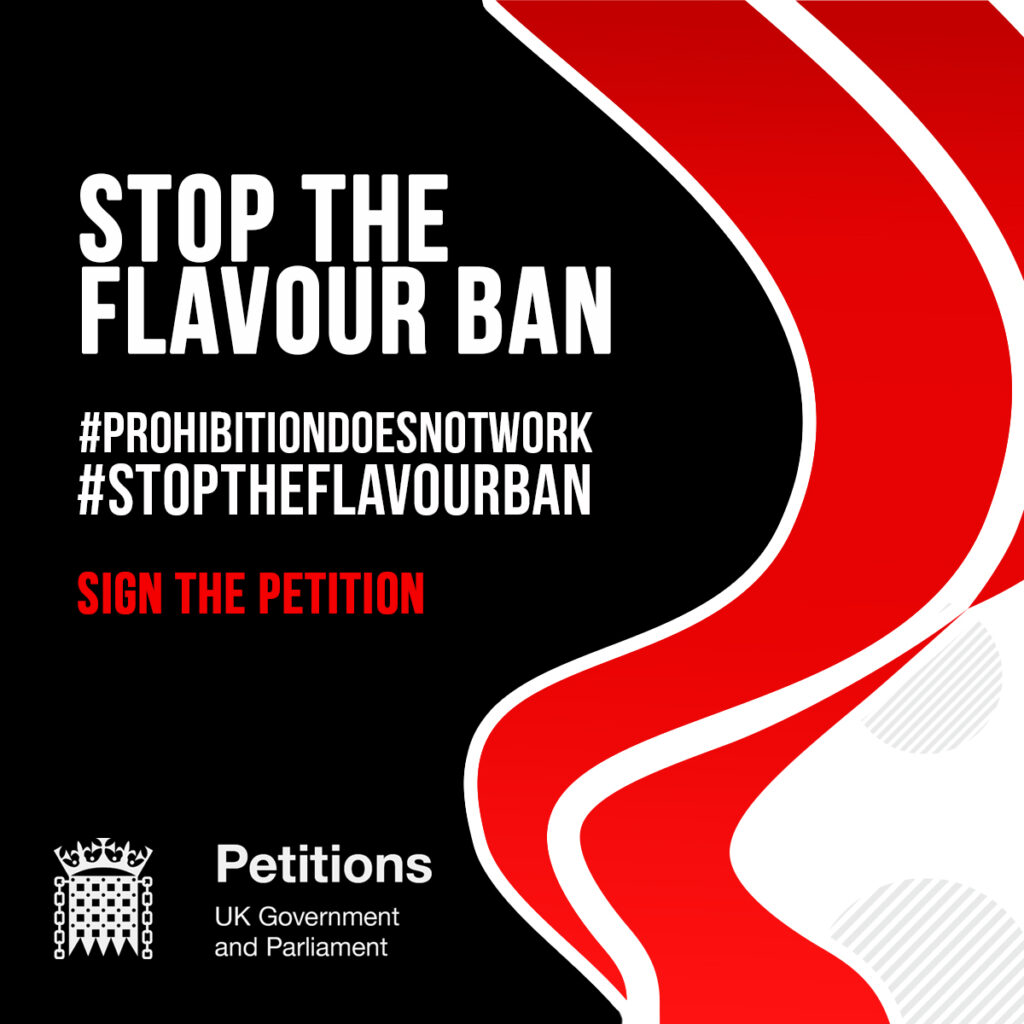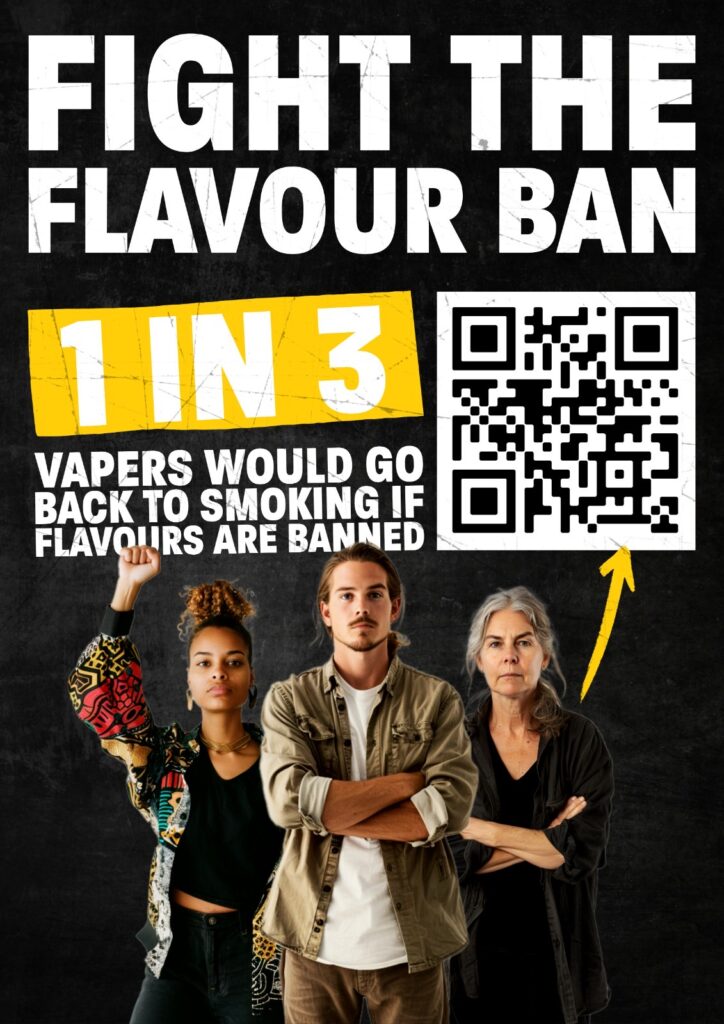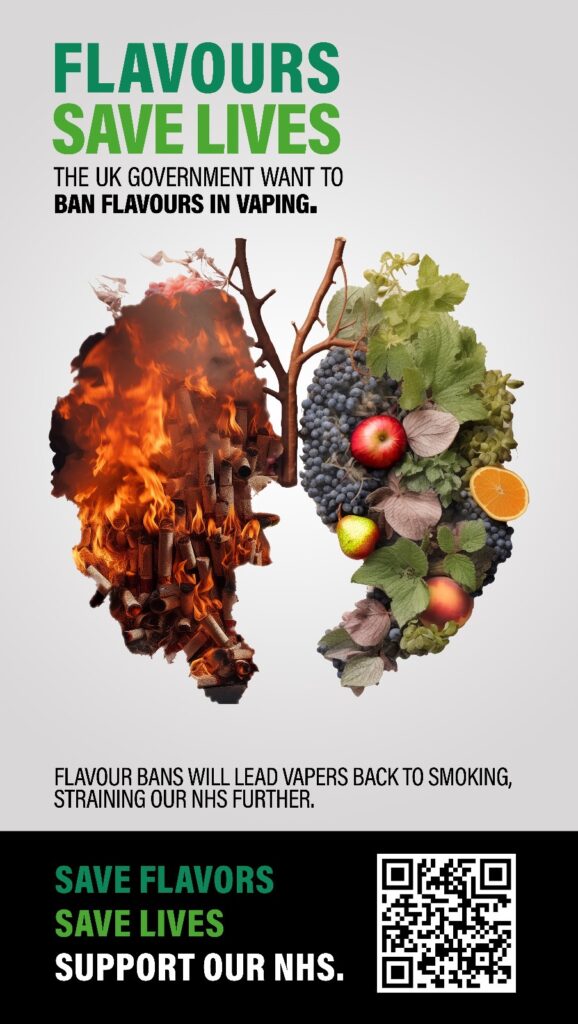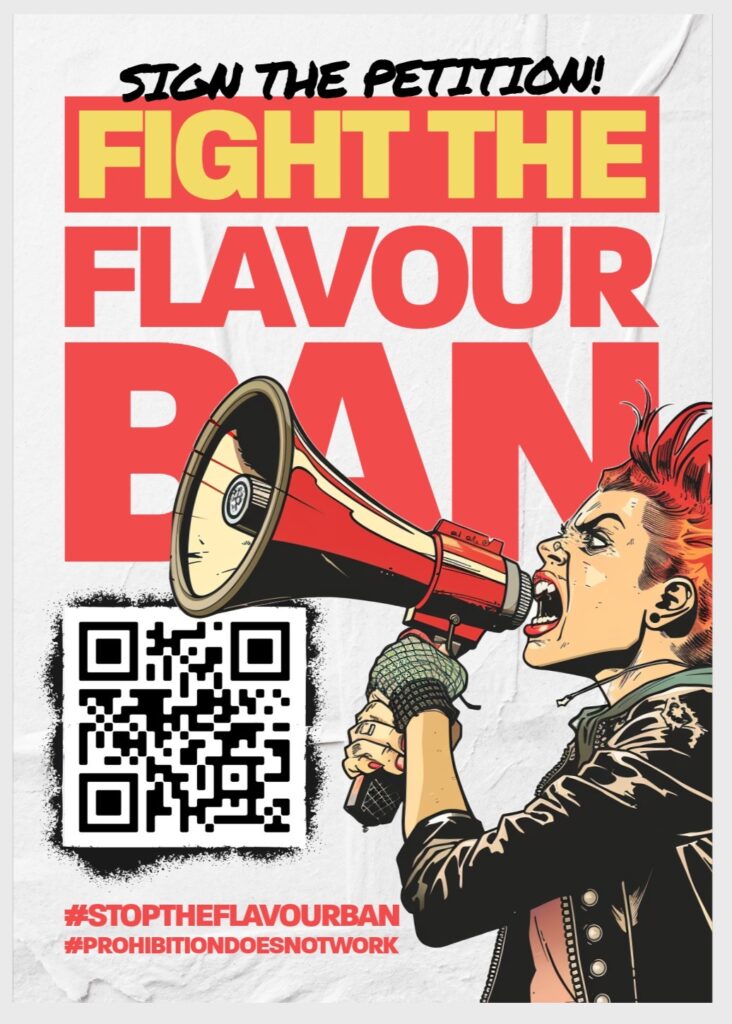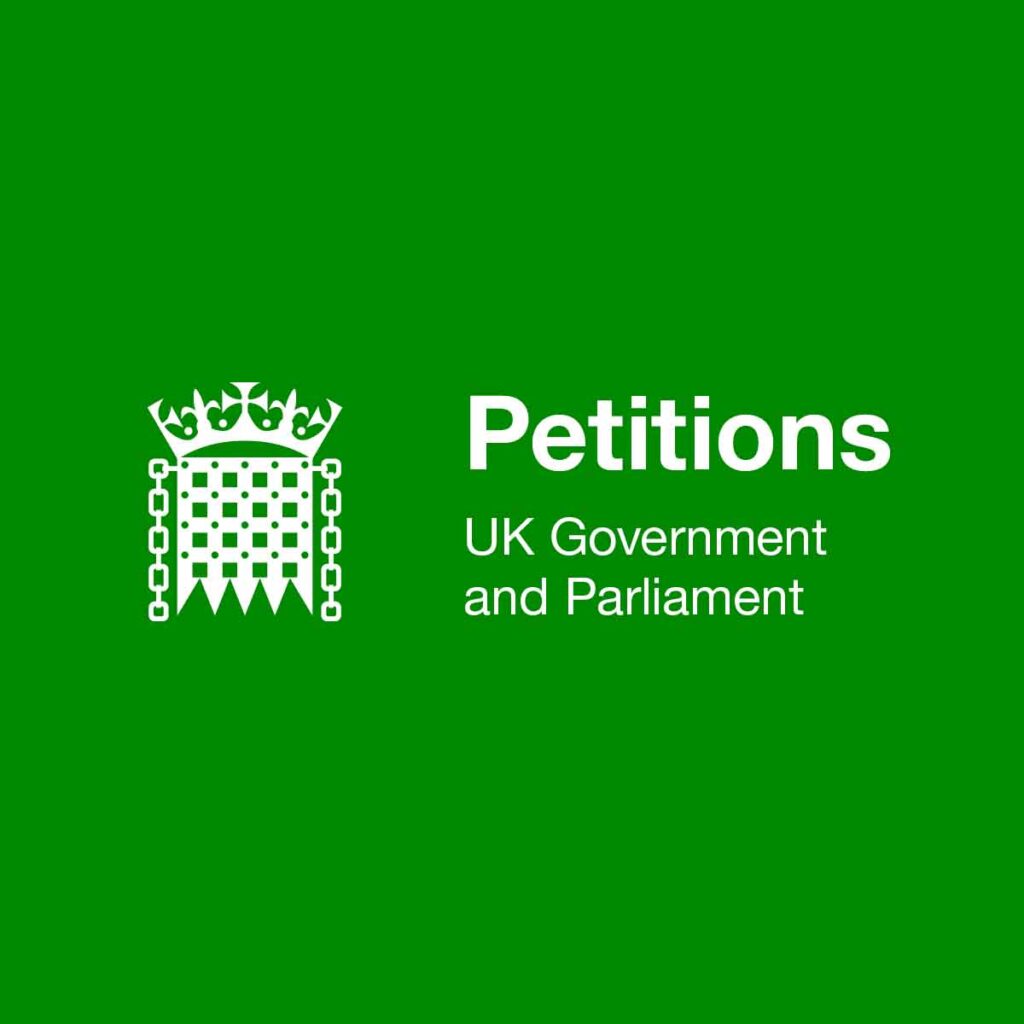Vape Tax and Flavour Ban: Navigating the Crossroads of Regulation and Freedom in the Vaping Industry
The Dawn of a New Era: UK’s Bold Step Against Disposable Vapes
The United Kingdom is poised to take a bold step in its approach to vaping regulation. The government has laid down the gauntlet to phase out disposable vapes. Although the exact date is not set in stone, the message is clear: by April 2025, disposables are expected to be relics of the past. This initiative isn’t without its detractors, with some voicing concerns over consumer choice and industry impact. However, as an advocate for responsible vaping, I believe this is a progressive move towards a more sustainable future. It’s not just about curtailing a product; it’s about setting a precedent for environmental consciousness and demonstrating a commitment to long-term public health
Tackling Youth Vaping: A Dual Focus on Health and Environment
The primary motivator behind the decision to ban disposable vapes is the growing concern over youth vaping, which has emerged as a significant public health issue. This ban signals a critical step towards curbing the accessibility and appeal of vaping products to young people, aiming to mitigate the rise in underage vaping. While environmental considerations are part of the discussion, the urgency to protect our youth from the potential harms of nicotine addiction stands at the forefront of this policy decision.
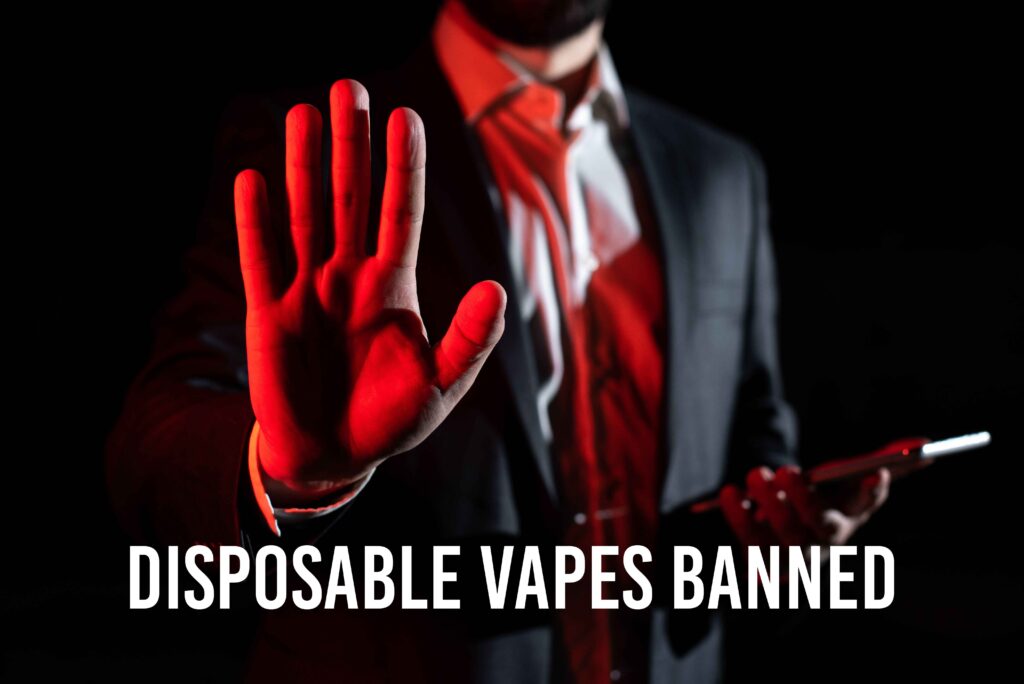
Innovative Responses: The Industry’s Shift Towards Sustainability
From the perspective of the vaping industry, this regulatory change presents an opportunity for transformation. It challenges manufacturers to innovate by developing less appealing products to minors and promoting harm reduction for adult users. The shift away from disposable vapes could lead to the creation of more sustainable, refillable, and rechargeable options, appealing to adult consumers seeking healthier and more eco-friendly alternatives to traditional smoking.
Navigating Market Disruptions
The adaptation process might introduce initial disruptions within the market, impacting businesses of various sizes. Smaller enterprises, in particular, may need help navigating this transition, facing potential risks to their survival. Despite these hurdles, the industry’s capacity for resilience and innovation is expected to drive a successful shift towards products that align more closely with public health objectives and environmental sustainability.
Consumer Choices and Environmental Impacts
Furthermore, this ban emphasises the importance of making conscious choices as consumers, particularly in how those choices affect public health and the environment. By moving away from disposable vaping products, the message is clear: the health of our youth and the well-being of our planet are priorities that require immediate action. This policy seeks to reduce the environmental burden of waste and aims to foster a more health-conscious and responsible vaping culture.
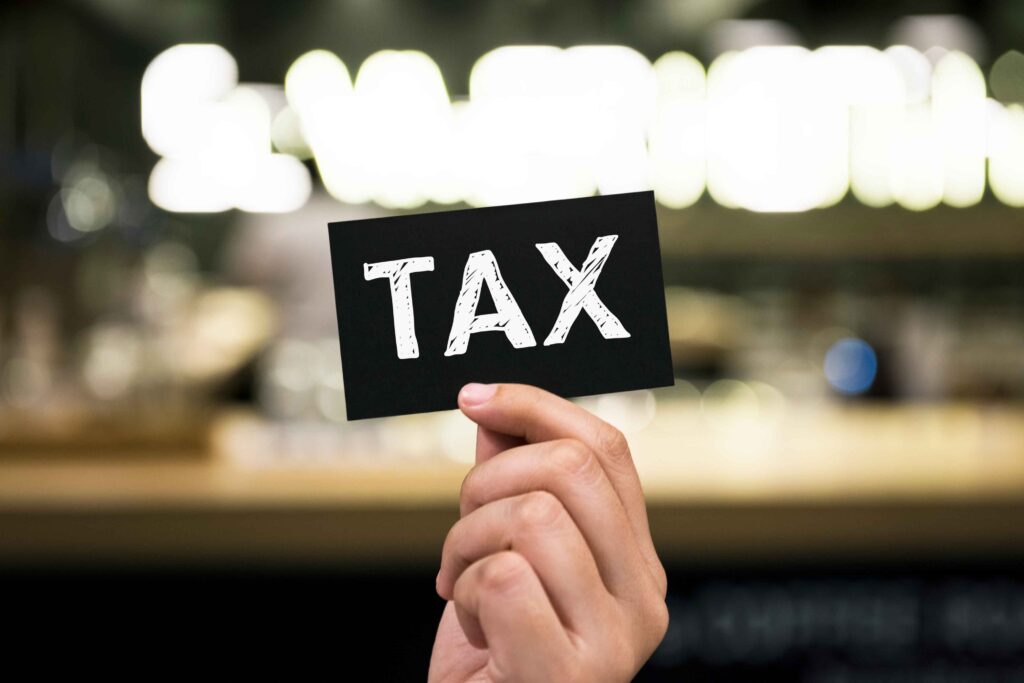
The Introduction of Vape Tax by Jeremy Hunt
Details of the Tax Announcement
The recent announcement from Chancellor Jeremy Hunt introducing a tax on vaping products has rippled through the community, signalling a possible sea change. On the surface, it aligns vaping more closely with traditional tobacco products in the fiscal sense, a move that has been met with a mix of apprehension and outright disapproval from various corners of the vaping world.
Unraveling the Fiscal Implications
Details on how this tax will be implemented are still forthcoming, and these specifics will be crucial. What products will be taxed? Will there be a threshold? How will this affect the price point of entry-level kits versus more advanced setups? As we anticipate fully disclosing the budget, these are the questions on every vaper’s and retailer’s lips.
The Debate on Taxation
The core of the debate around this vape tax swirls around a fundamental question: Will higher prices benefit or harm public health? On the one hand, higher costs could deter non-smokers from picking up a vaping device, aligning with public health goals to prevent new nicotine dependencies. However, the other edge of this sword cuts deep — for smokers looking to transition away from combustible cigarettes, increased costs could be a formidable barrier
Public Health vs. Economic Deterrents
This is where the policy could backfire. Numerous health organisations have recognised vaping as a less harmful alternative to smoking. By imposing a tax that could elevate the price of vaping to near that of smoking, we risk anchoring smokers to their old ways. It’s an economic nudge that might push them away from what could be a life-saving switch.
The Risk of Unintended Consequences
Moreover, the tax on vaping products could have repercussions beyond consumer behaviour. There’s a genuine concern about the growth of a black market due to high taxation. History has shown that when legal products become financially out of reach, illicit markets thrive. This undermines tax revenue and could lead to unregulated products that pose significant health risks.
Crafting a Balanced Approach
Another consideration is the precedent this sets. Taxation of vaping products positions them within a framework traditionally reserved for products that are discouraged, such as alcohol and tobacco. While the intention might be to use fiscal measures to promote public health, such measures must be balanced with understanding vaping’s role in harm reduction.
In essence, the vaping tax is a double-edged policy. If not carefully calibrated, it could cut into the very harm reduction potential that vaping represents. A delicate balance must be struck — one that discourages the initiation of vaping among non-smokers while not dissuading smokers from using vaping as a tool to quit. As the details of this tax unfurl, we must remain vigilant, ensuring that the scales are tipped towards advancing public health, not just public revenue.
The Controversial Potential Ban on Flavours
The Case Against the Ban
The essence of vaping’s allure for many is its variety of flavours. From refreshing fruits to creamy desserts, flavours have become integral to the identity of vaping culture and its success as a cessation method.
The Heart of Vaping Culture: Flavour Diversity
The proposed flavour ban is more than just a policy change; it strikes at the heart of what has enabled many former smokers to transition away from combustible tobacco products. There’s a palpable fear within the community that such a ban would not only destabilise the industry but could also reverse the progress made in tobacco harm reduction.
Facing the Precipice: Potential Ramifications of a Ban
The ramifications of a flavour ban could be profound. Imagine the landscape of vaping transformed into a monochrome version of its former self, stripped of the very thing that made it appealing and effective for many. We are standing on the precipice of a decision that could send shockwaves through the community of ex-smokers who have found solace in vaping, potentially sending them spiralling back to old habits.
The Petition and Industry Response
With over 40,000 voices united in opposition, the petition against the flavour ban is a roar that cannot be ignored. It’s a collective stand, not just for the sake of business but for public health. The industry’s response has been swift and straightforward: flavours are a cornerstone of vaping’s role in smoking cessation. To eliminate them would be to dismantle a crucial bridge many have used to escape the grip of smoking.
A United Stand for Public Health and Choice
The concerns are not just hypothetical. Real-life implications are at stake here. Without flavours, the fear of a resurgence in smoking is not just conjecture; it’s a looming possibility supported by consumer behaviour patterns. Flavours are a significant factor in the success of quitting attempts. The anecdotal evidence from countless individuals who credit flavoured e-liquids with their ability to quit smoking cannot be discounted.
The Threat of Unintended Consequences
Furthermore, a flavour ban could inadvertently open the door to a black market for flavoured e-liquids, posing public health risks. Unregulated products can lead to dangerous concoctions devoid of quality control, potentially exposing users to harmful substances. It is a risk that could undo the hard-fought gains in the battle against smoking-related diseases.
Defending Progress in Public Health
Our movement goes beyond defending the interests of an industry; it’s about safeguarding the progress we’ve made in public health. As we marshal our forces against this proposed ban, we do so with the conviction that we are not only preserving choice but protecting a viable, less harmful alternative to smoking.

International Perspectives: The Case of China
China’s Stance on Flavoured E-Liquids
The People’s Republic of China presents an intriguing case study on vaping regulation. As the powerhouse of e-cigarette production, China’s decision to ban the sale of flavoured e-liquids domestically while continuing to flood international markets with these products is paradoxical. This dichotomy suggests a prioritisation of economic gain over the health of its citizens.
Economic Interests vs. Public Health: Analysing China’s Ban
With the Chinese government and the tobacco industry so closely intertwined, the policy raises significant questions about the real motivations behind the ban. It seems to be less about safeguarding the health of the young population—a commonly cited concern—and more about protecting the interests of the state-owned tobacco monopoly.
The Global Ripple Effect of China’s Policy
This move by China is particularly disconcerting considering the potential global impact. As the primary manufacturer of vaping products, the country’s policy decisions send ripples across the industry worldwide. By restricting domestic access to flavoured e-liquids, the Chinese government may indirectly shape global consumption patterns and influence international regulatory trends
Comparison with the UK’s Approach
At a Regulatory Crossroads: Lessons from China
Given China’s controversial policy, the UK is at a regulatory crossroads. The potential flavour ban in the UK has drawn parallels to the Chinese approach, sparking fears that economic considerations may overrule public health benefits. However, the UK has a unique opportunity to set a global example by developing a regulatory framework that balances public health with economic vitality.
Setting a Global Example: The UK’s Progressive Stance
The UK’s approach has traditionally been more progressive, especially with Public Health England’s endorsement of vaping as a means to quit smoking. This starkly contrasts China’s strategy, which contradicts the harm reduction potential that vaping represents. As the UK considers its next steps, it’s imperative to avoid the pitfalls of policies that appear to protect public health but, in reality, may have ulterior motives tied to financial gains from traditional tobacco sales.
Crafting Transparent and Grounded Policies
The UK needs to craft a narrative and a set of policies that are transparent in their intentions and grounded in scientific research. The focus should remain steadfast on reducing harm and supporting public health initiatives while ensuring the viability and integrity of the vaping industry. In doing so, the UK could differentiate itself from the Chinese model and affirm its commitment to health and choice, refusing to compromise one for the other.
Lessons from New Zealand’s Legislation
The Original Law and Its Intentions
New Zealand once stood on the vanguard of anti-smoking legislation with a law that aimed to create a smoke-free generation. The goal was to prohibit the sale of tobacco to individuals born after 2009, effectively phasing out smoking over time.
A Visionary Approach to Smoke-Free Generations
The intent behind this groundbreaking law was clear: to protect future generations from the well-documented harms of smoking, thereby cutting healthcare costs and, more importantly, saving lives. It was an unprecedented move that signalled New Zealand’s commitment to public health and its willingness to take on the tobacco industry in the interest of its citizens.
The Reversal and Its Implications
However, the resolve that once characterised New Zealand’s public health policy has shown signs of wavering. The decision to reverse course on such a landmark policy sends a mixed message to the international community and begs the question: what led to this sudden change of heart?
Understanding the Shift: Factors Behind the Reversal
The answer may lie in a complex interplay of industry pressure, public opinion, and political will. This reversal has implications for the global fight against smoking, revealing the fragility of even the most ambitious public health policies when faced with real-world challenges.
Recent Developments and the UK’s Stance
Learning from New Zealand’s Cautionary Tale
Observing New Zealand’s legislative retreat is a cautionary tale for the UK. As we venture down our path of vaping regulation and tobacco control, the lesson is clear: policies must be resilient to withstand the pressures that will inevitably come their way. The fear is that the UK government, in its efforts to regulate vaping through potential flavour bans and increased taxes, may be laying the groundwork for a similar backtrack that could derail progress in reducing smoking rates.
Navigating the Future: Resilience in Policy Making
There’s a real risk that by over-regulating vaping—a tool that has been instrumental in helping many quit smoking—the government may unintentionally push people back towards traditional tobacco products. Such a misstep would not only contradict the UK’s public health objectives but also disregard the evidence supporting vaping as a less harmful alternative for smokers looking to quit.
A Balanced Approach to Vaping Regulation
The UK can learn from New Zealand’s experience and stay the course on its commitment to public health. By adopting a balanced and evidence-based approach to vaping regulation, the UK can avoid the pitfalls of New Zealand’s reversal and reaffirm its role as a leader in tobacco harm reduction. This is not the time for half-measures or legislative sidestepping; it’s a time for firm action that protects the health of the nation without compromising the gains made in smoking cessation.
Taxation vs. Flavour Ban: An EU Perspective
The Misguided Optimism in the UK
In the corridors of the UK vaping community, there’s a murmur of hope that taxation might spare us from the dreaded flavour ban. The reasoning is simple yet flawed: if the government can profit from vaping through taxes, why would they restrict it further by banning flavours?
Challenging Assumptions: Taxation and Regulation
It’s an optimism that ignores the lessons from our neighbours in the EU, where financial gain through taxation has not prevented restrictive flavour legislation. The reality is that taxation and flavour bans are not mutually exclusive; they can coexist, each with its justification in the eyes of policymakers.
A Glimpse into the EU’s Approach
The tale told by the data is sobering. The EU’s stance demonstrates that taxation does not necessarily safeguard flavours from the regulatory axe. Many EU countries have introduced taxes on vaping products, yet they must implement additional flavour restrictions.
The Regulatory Landscape in the EU: Taxation and Flavour Bans
This approach is particularly concerning because it suggests a trend towards more stringent regulation, potentially driven by factors other than public health, such as moralistic views on smoking and vaping or the influence of the tobacco lobby
Evidence from the EU
Data-Driven Insights: The Dual Strategy of Taxation and Ban
The evidence is in the numbers: the table illustrates that many EU member states have opted for a dual strategy of imposing taxes on vaping products while enforcing flavour bans. This reality shatters the belief that taxation could be a shield to protect the variety of flavours that many ex-smokers have come to rely on. Taxation is not a line in the sand against further prohibitions but rather a parallel track that can lead to even more restrictive measures.
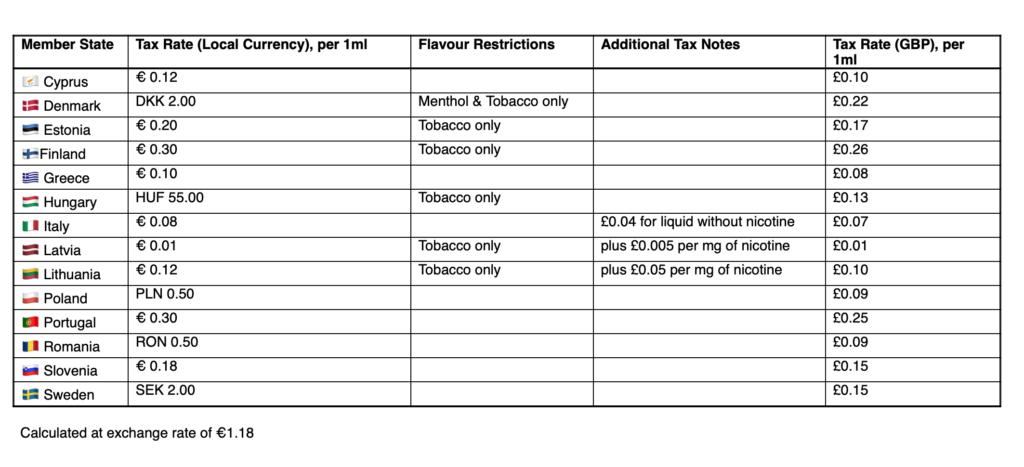
Rethinking Strategy: Lessons for the UK
The UK must heed these signs and consider the implications of following a similar path. To avoid the pitfalls observed in the EU, it’s crucial to recognise that taxation, while a tool for revenue, should not be a precursor to or justification for a flavour ban. The two must be debated and decided upon separately, with a clear-eyed focus on their distinct impacts on public health, consumer choice, and the vaping industry.
New Enforcement Notice on Vaping Ads
Background and Rationale
The Tobacco Products Directive (TPD) of 2016 was a landmark moment for the vaping industry, establishing standards and regulations to ensure responsible marketing and distribution of vaping products. However, the landscape of vaping has evolved rapidly, and with it, the tactics for promotion. While comprehensive at the time, the Directive’s guidelines have been interpreted liberally by some, leading to a marketing free-for-all that has attracted criticism from health advocates and regulatory scrutiny.
This laissez-faire attitude towards the TPD’s advertising restrictions has culminated in the issuance of the recent Enforcement Notice. Far from being an unexpected development, this Notice is the culmination of years of regulatory oversight catching up with an industry that has been, in some cases, too innovative for its good. It reflects a growing concern that without proper checks, the vaping industry’s advertising practices could contribute to a rise in vaping among non-smokers, including youth, potentially undermining the harm reduction aspect of vaping for current smokers.
The Need for Stricter Enforcement
Background and Rationale
The vaping market has seen an influx of new entrants, many of whom may not have been part of the industry when the TPD was first introduced. These ‘Johnny-come-latelies’, as they’re sometimes known, may have inadvertently or deliberately overlooked the existing guidelines, pushing the boundaries of what is considered acceptable promotion
The Evolution of Vaping Advertising: Challenges and Criticisms
The result has been an advertising landscape that sometimes prioritises commercial gain over public health messaging and compliance with regulations.
The Enforcement Notice serves as a clarion call to the industry that the era of loose interpretation of advertising guidelines is over.

The Need for Stricter Enforcement
It is a stark reminder that with the freedom to market and sell vaping products comes the responsibility to do so in a way that is compliant with public health objectives. This means no more backdoor tactics, no more exploiting loopholes, and no more grey areas.
Addressing the New Wave: The Role of New Entrants in Advertising Practices
Stricter enforcement is not just about curtailing creativity or commercial expression; it’s about protecting consumers and ensuring the vaping industry maintains a credible and responsible image. It’s about ensuring that vaping remains what it was always intended to be—a means to reduce harm, not a gateway to nicotine addiction.
The Path Forward: Stricter Guidelines and Industry Responsibility
With this enforcement, we will likely see a shift towards more educational and transparent marketing practices. This could be an opportunity for the vaping industry to reset and refocus on its role in society as part of the solution to smoking, not a problem in itself.
Shifting Towards Responsible Marketing
It’s time for the industry to mature, standardise its marketing practices, and align them closely with harm reduction and consumer protection principles.
The Licensing Debate
Advocates and Critics
The UK Vaping Industry Association’s (UKVIA) push for a licensing scheme has become a focal point for intense debate within the industry. With support from major players like Vape Club, the proposition is to create a regulated framework where vaping products are sold exclusively in licensed outlets, such as specialised vape shops, supermarkets, and convenience stores. Proponents argue that this could streamline regulation and enforcement, ensuring only compliant products are sold by responsible retailers.
Concerns from Critics: Accessibility, Fairness, and Market Impact
Critics, however, raise concerns about the practicality and fairness of such a system. They argue that confining sales to these outlets could inadvertently limit access for adult smokers seeking safer alternatives to combustible tobacco. They also say that it could create a monopoly-like situation, squeezing out smaller businesses and stifling competition within the industry.
A Practical Perspective on Licensing
Navigating the Nuances of Licensing
From a practical standpoint, licensing is a double-edged sword. While the intent to regulate and standardise the market is commendable, the execution must be nuanced and discerning. A broad-brush approach could inadvertently do more harm than good, potentially driving consumers towards less scrupulous sources, including a burgeoning black market.
The Ideal Candidates for Licensing
We must approach regulation precisely—a scalpel, not a sledgehammer. Proper vape shops, which specialise in these products and can offer expertise and guidance to consumers, seem to be the ideal candidates for such a licensing scheme. With their established protocols for age verification and sales of regulated products, supermarkets also appear to be suitable retail points.

The Contentious Inclusion of Convenience Stores
However, including convenience stores in this framework is contentious. Some convenience stores’ track records for under-the-counter sales and inadequate age verification processes cannot be overlooked. A licensing scheme that fails to address these issues could inadvertently contribute to the very problems it seeks to solve, such as underage vaping and the sale of illicit products.
Upholding Consumer Protection and Product Quality
A licensing scheme should uphold the highest consumer protection standards and product quality. It must be designed to support responsible retailers while excluding those who fail to comply with strict regulatory standards. Such a scheme should not just be about where products can be sold but also about maintaining high standards of retail practice.
Beyond Licensing: Addressing Comprehensive Regulation
Moreover, the licensing debate should focus on broader issues, such as the potential flavour ban and the implications of a vape tax. Regulation must be comprehensive, addressing all facets of the industry to ensure the health and well-being of consumers are paramount.

World Health Organisation and Misinformation
Navigating the Vaping Debate: A Balanced Perspective
The vaping industry finds itself at the crossroads of a complex and often polarised debate on public health.
The WHO’s Stance on E-cigarettes
On the one hand, recent statements from the World Health Organization highlighted the potential risks associated with e-cigarette use, including exposure to toxic substances that may lead to serious health issues like cancer, cardiovascular diseases, lung disorders, and adverse effects on brain development in children. Such warnings underscore the global health body’s stance on encouraging individuals to quit both tobacco and e-cigarettes for a healthier lifestyle, emphasising that switching from traditional cigarettes to vaping does not equate to quitting.
The NHS’s Contrasting View on Vaping
On the other hand, the National Health Service (NHS) in the UK presents a contrasting view, recognising vaping as a significantly less harmful alternative to smoking. According to the NHS, e-cigarettes are about 95% safer than conventional cigarettes, suggesting that they can help smokers quit and, consequently, offer a public health benefit.
Bridging the Gap: The Need for Nuanced Policy and Research
This dichotomy reflects the challenges faced by the vaping industry as it navigates between concerns raised by international health organisations and endorsements of vaping’s relative benefits by national health services. It underscores the need for ongoing research, clear communication, and nuanced policy-making that balances the imperative to protect public health with the potential benefits of vaping as a harm reduction tool.
Conclusion: The Ongoing Battle
Reflecting on the Complex Landscape of Vaping Regulation
As we reflect on the dynamic and often contentious terrain of vaping regulation in the UK, several pivotal themes have emerged, painting a complex picture of the challenges and opportunities ahead. The debate encompasses a broad spectrum of issues, from the environmental repercussions of disposable vape bans and Jeremy Hunt’s contentious proposals for a vape tax to the far-reaching implications of potential flavour restrictions.
Global Insights and Local Challenges
Our exploration has spanned international borders, drawing insights from China’s regulation of flavoured e-liquids and New Zealand’s legislative adaptations, placing the UK’s regulatory dilemmas within a global context. We’ve delved into the intricacies of the EU’s taxation policies, the implications of stricter advertising regulations, and the ongoing discussions around vaping product licensing, each revealing different facets of the intricate balance between regulation, public health, and individual freedoms.
The Balance Between Public Health and Individual Freedoms
Central to these discussions is the challenge of crafting regulations that not only address public health concerns but also support smoking cessation without triggering adverse effects such as a resurgence in smoking rates, the emergence of a black market, or limiting access to effective harm-reduction strategies.
The Imperative for Evidence-Based Policy
The recent discourse surrounding the World Health Organization’s warnings against e-cigarettes and the NHS’s endorsement of vaping as a less harmful alternative underscores the need for a nuanced, evidence-based approach to vaping policy—one that recognises the potential risks but also the significant public health benefits of providing safer alternatives to smoking.
The Role of Community, Advocacy, and Dialogue
In this critical moment, the role of community engagement, informed advocacy, and collaborative dialogue cannot be understated. The vaping community and industry stakeholders must remain proactive, informed, and engaged in the regulatory process.
Moving Forward: Crafting a Balanced Regulatory Framework
Our goal extends beyond merely defending a sector; it encompasses a commitment to preserving public health achievements and ensuring that future policies are grounded in a comprehensive understanding of the evidence, ethical considerations, and the tangible impact on individuals’ lives. As we move forward, we must strive for a regulatory framework that balances these considerations, fostering an environment where public health objectives and individual choices are aligned in pursuing a healthier society.
Call to Action
Make Your Voice Heard: Opposing the Flavour Ban
This is where you come in. If you share our concerns about the potential flavour ban and its implications for public health, industry sustainability, and individual freedom, we urge you to make your voice heard.
Join the Petition: Stand Up for Vaping Rights
Join us in signing the petition against the flavour ban, which could set a dangerous precedent and reverse the gains in smoking cessation efforts. By standing together, we can advocate for regulations that protect consumers, support public health, and foster a responsible vaping industry.
Sign the petition against the flavour ban here.
Shape the Future of Vaping and Public Health
Your action today could help shape a healthier, more informed, and more equitable future for vaping and public health. Let’s not let this moment pass without making our voices heard. We can continue fighting for sensible, evidence-based policies supporting harm reduction and respecting consumer choice.
If you are interested in our earlier blog posts about the UK’s vape industry landscape, please read my previous posts titled ‘Should there be a ban on disposable vapes?‘ and ‘How the UK’s disposable vape ban could reshape the industry‘.

